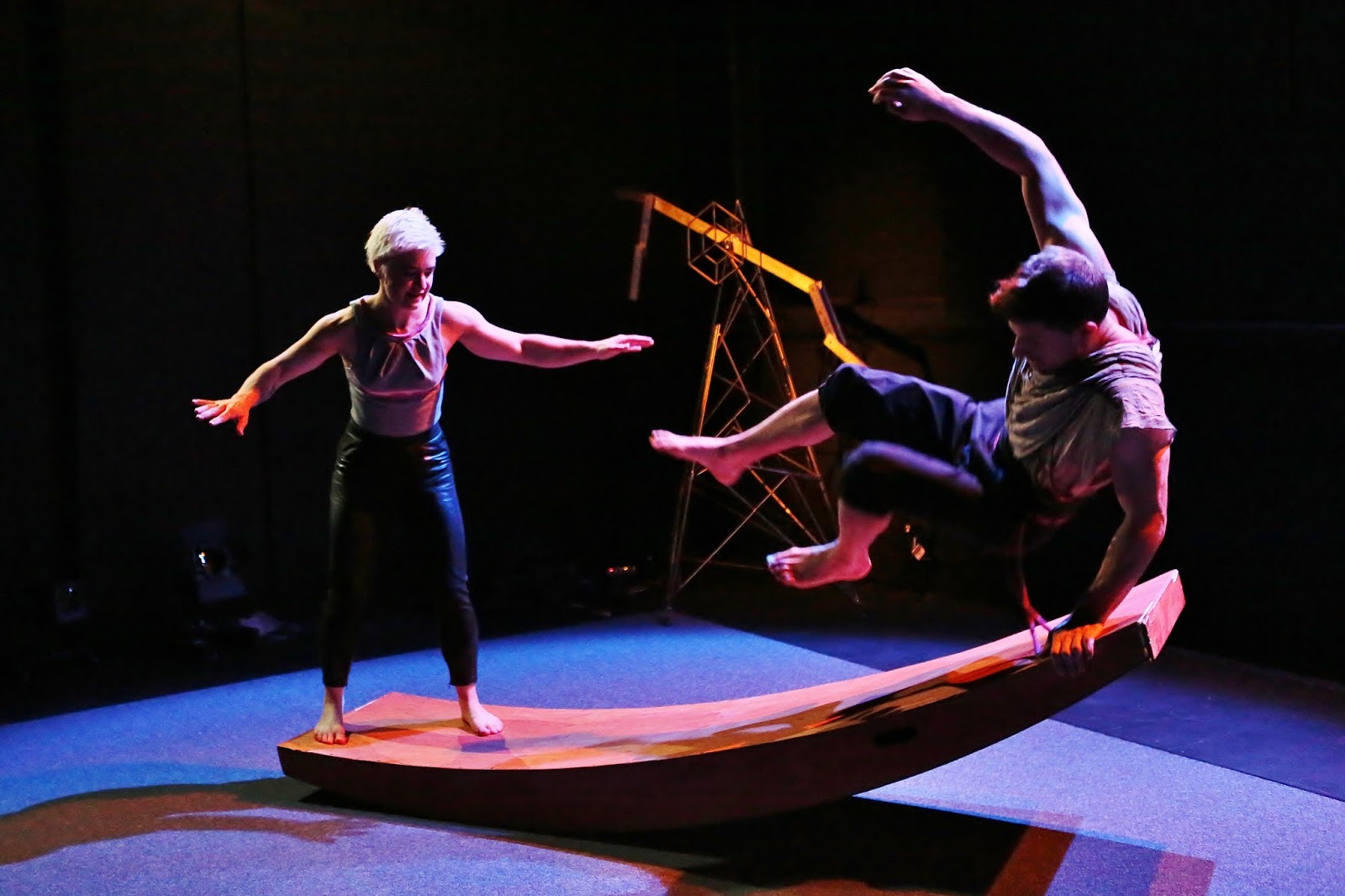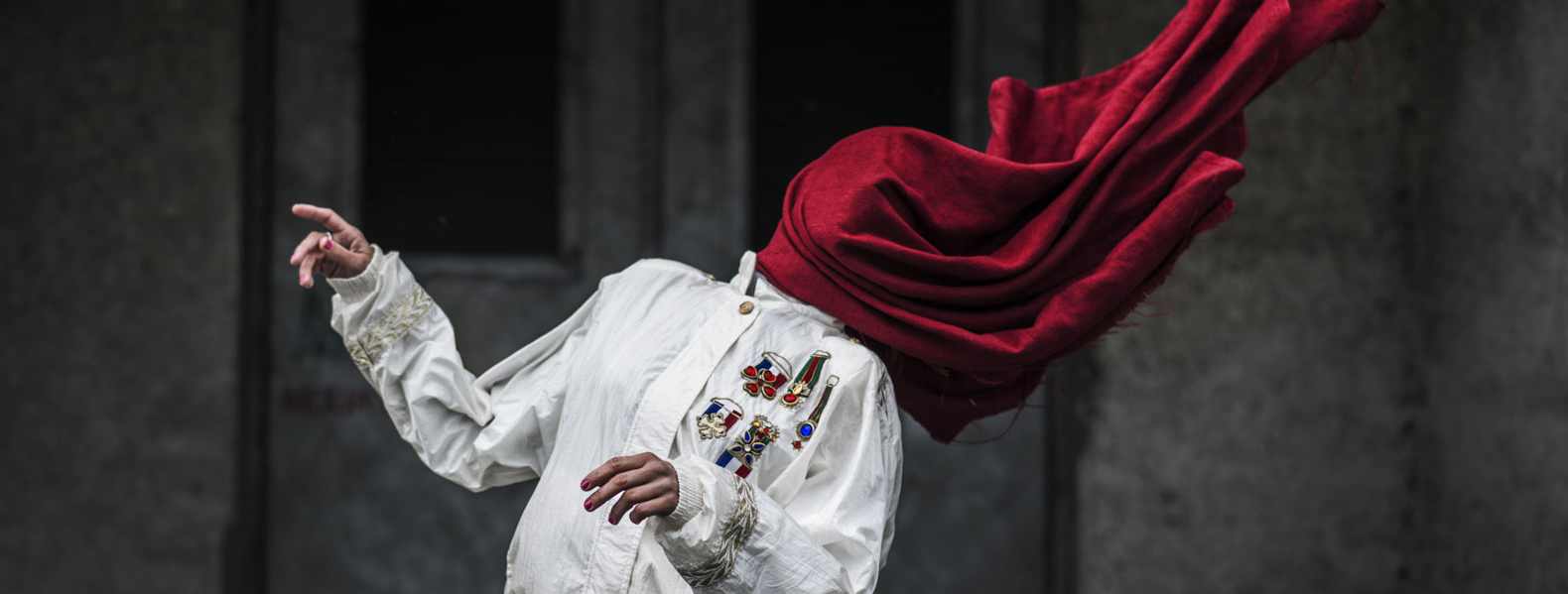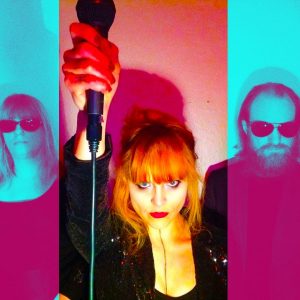‘Good evening this is your captain speaking. Get ready for a crash landing. We’re going down’.
Perhaps Hope is a circus show with a difference: a dark and moody circus-theatre exploration of a dystopian future. Or perhaps it’s the present. Two people – a kind of end-of-civilisation Adam and Eve – are marooned somewhere, who knows where, or when. We presume that there has been some sort of disaster – probably an ecological meltdown. ‘There must be someone to blame’ says the recorded voiceover at one point: ‘No birds, no bees, no HIV. No Lions. No tigers. No vegetarians. No lesbians. No smuggling. no recycling. No immigration.’ The point being, all the pros and cons of human life, all the opinions and personal identity issues that currently engage and concern us, will have become nothing, meaningless.
To the sound of a slightly remixed and distorted version of Laurie Anderson’s O Superman, they stand staring out at us, leaning into each other; one tall, one short, their shadows cast large behind them onto the wall. It’s an image that’s repeated, with slight variations, throughout the show – one of many sound and movement motifs returned to again and again, rituals or obsessive-compulsive tics.
Onstage with them is a lovely carved-wood boat cum see saw; and behind that a metal sculpture reminiscent of a ship’s mast or a radio antenna that is animated and played at regular intervals. There is also a stack of bottles and wooden tabletops/trays, that are formed into an ever-higher tower which is eventually stood on, the woman at the top staring out defiantly. Or perhaps hopefully. The bottles are also placed along the ‘boat’ and walked over: the circus skills employed throughout are predominantly balancing of one sort or another – acrobalance duets, solo hand-balancing, and walking or standing on or manipulating the see-saw boat.
The two performers (both Australian, with a performance CV that includes work with both Circa and Casus) are, inevitably with that track record, highly skilled. The acrobalance work together is beautifully controlled – and they are clever enough to play the ‘try, fail, and try again’ trick perfectly, for example as she teeters along on the bottles, reaching out to him for help.
Their characters, or onstage performance personae, work well together. There are some very lovely scenes. I love her crazy silent disco dancing whilst he stays straight and still, upside down in a perfect handstand on the balance sticks. They are not afraid to do nothing, often returning to points of stillness before the next bout of activity.
It is so great to see circus employed to say something about the world; and to see a show in which the various components – acrobatic and balancing skills, recorded spoken text montage, an elegant sound design, sparse but beautifully crafted set, and great lighting design – all merge so beautifully and harmoniously together, put to work in the telling of the tale.
And despite the shadowy gloom (literal and metaphorical) throughout, there are moments of humour – and the show ends on an optimistic note: it’s a new world, it’s a new dawn, it’s a new day… there is, perhaps, hope.





